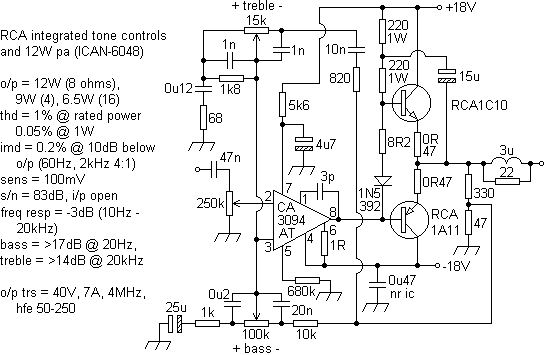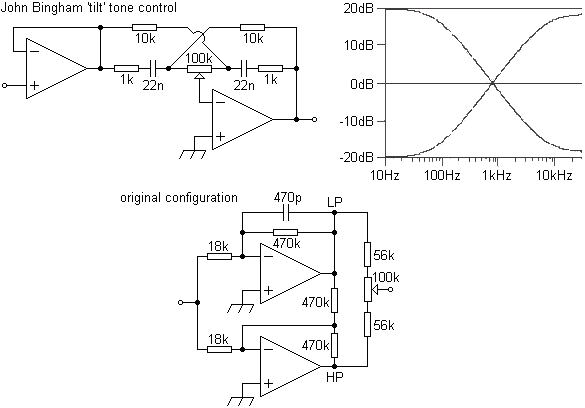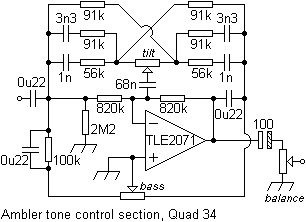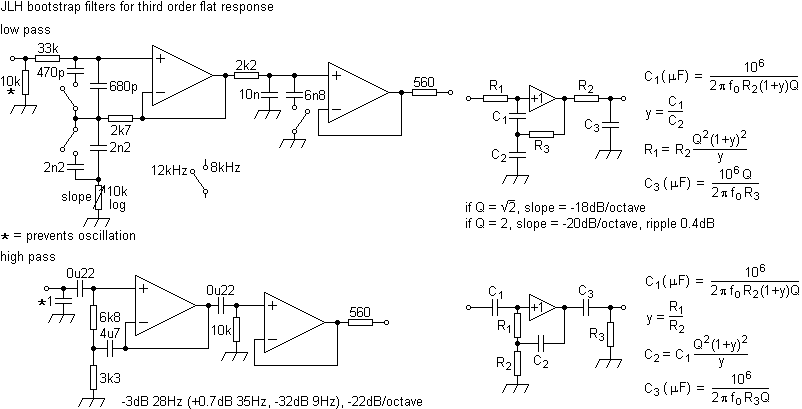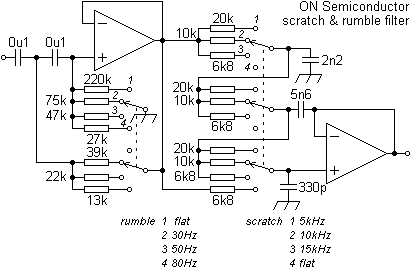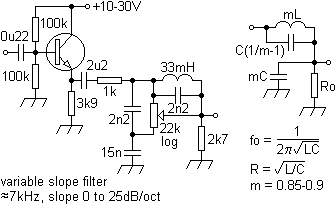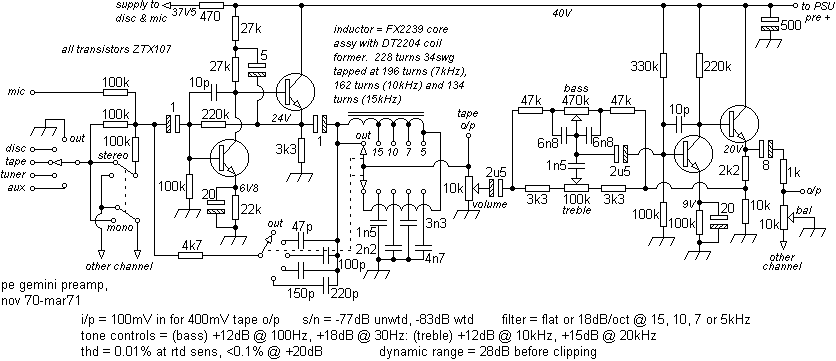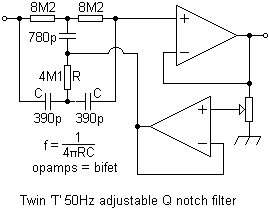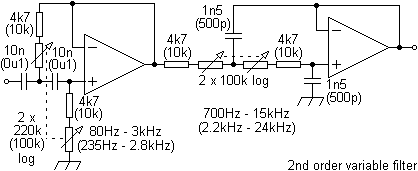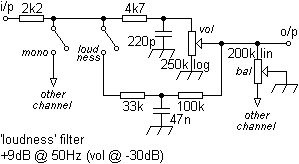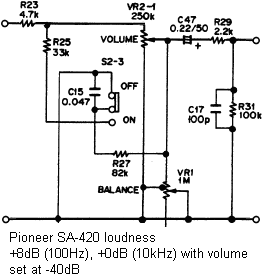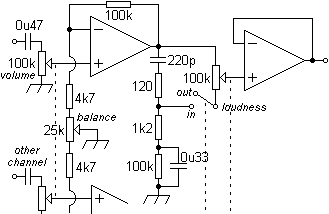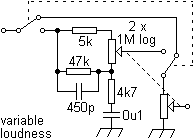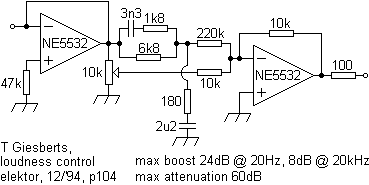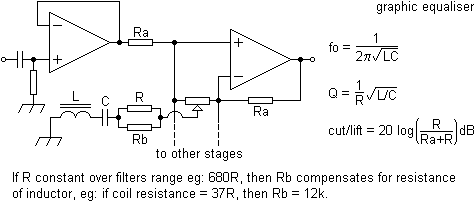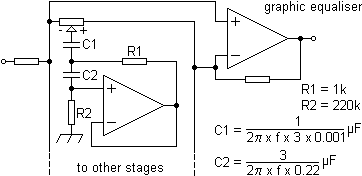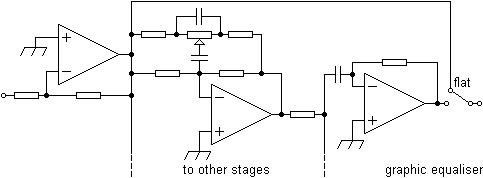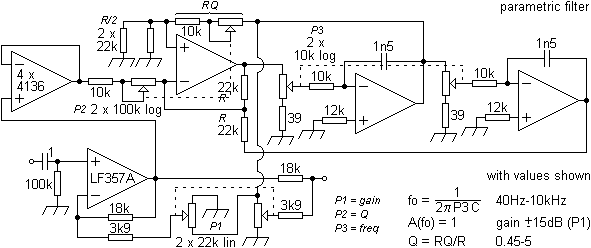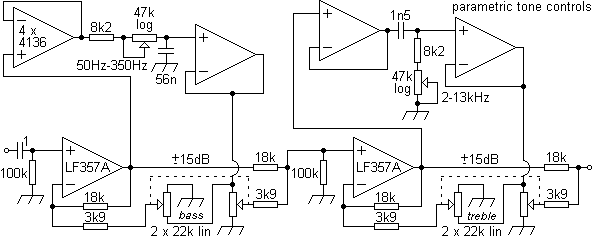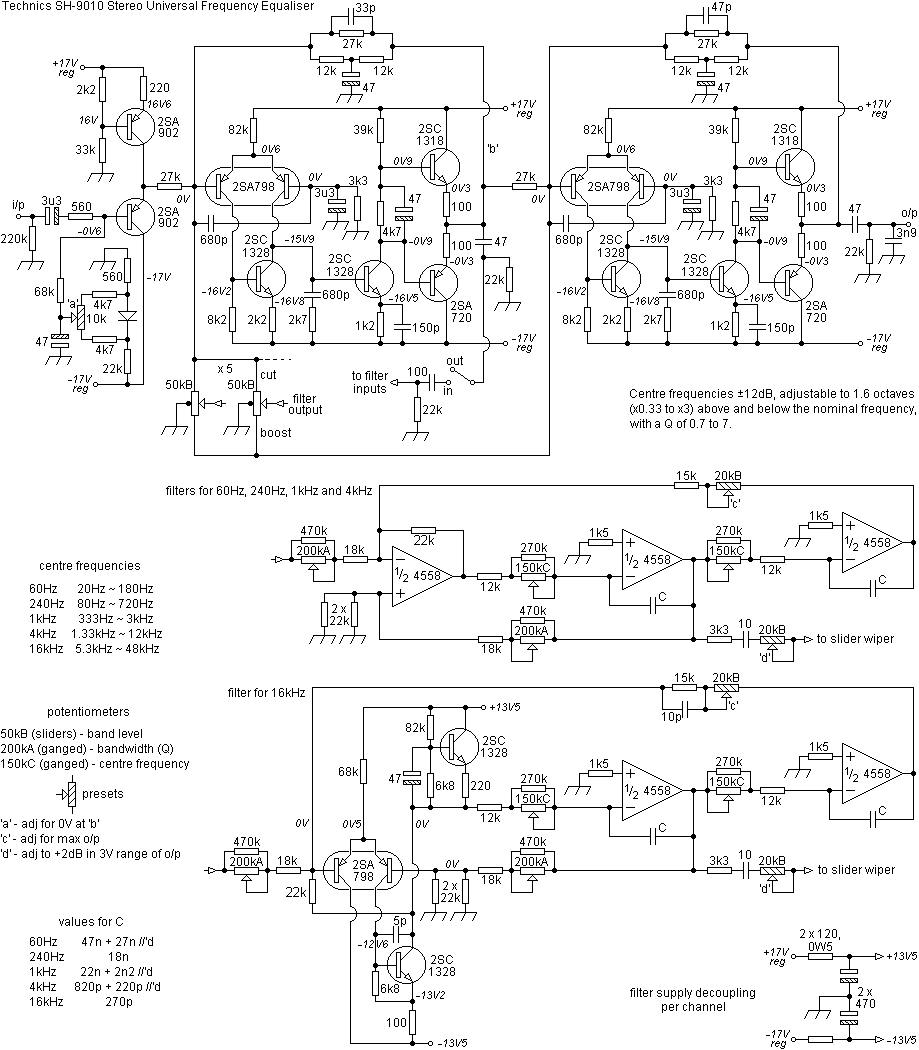Equalisation
A visit to any university's electrical or electronic department's library will reveal vast quantities of books about filters, often from floor to ceiling. Given the huge amount of work expended in this area, and by necessity, another mere scratch of the surface is offered here.
Purists require that equalisation, in any form, must never be used, claiming consequential and objectionable detriment to the 'purity' of any given signal. In the real world the opposite proves to be the case. Notwithstanding the variability that naturally occurs in human perception, most forms of transmission and recording use pre- and de-emphasis techniques to improve, say, signal to noise ratios and frequency responses without which there would be very little point in proceeding further with the relevant technology.
Similarly, defficiencies in the equipment used may require modification to increase listening comfort. Some commercial RIAA deviations can amount to ±6dB from 50Hz to 18kHz. One of the original functions for the inclusion of tone controls in an integrated amplifier was to accommodate differing recording curves like the old Columbia, AES and London types or those used for differing tape recording/playback standards/speeds.
Taking the highest quality signal source available to many domestic users as an example, some tuners, like the Technics ST-9600, had, apart from special 'hi-blend' noise cancelling and 'pink-noise' circuitry, a record function whereby a tape recording could be made before the de-emphasis (post-MPX), playback then passing through the de-emphasis thus reducing FM and tape noise (4 channel MPX outputs - horizontal and vertical - were also available). Many FM MPX decoders use output filters that allow mixing of frequencies above 2kHz to subjectively reduce noise without adversely affecting the stereo image. Examples include

and
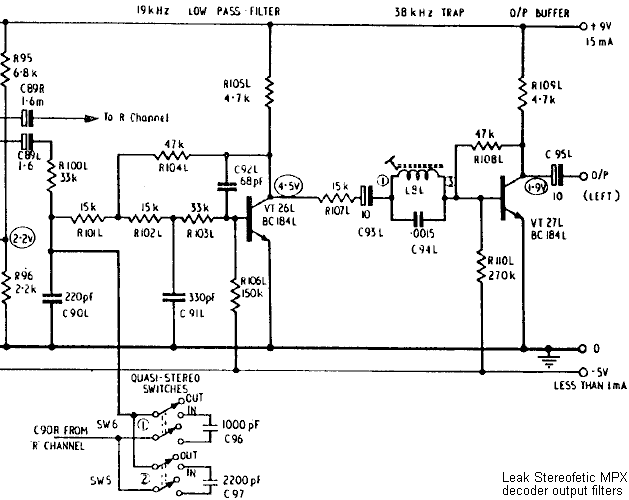
Perhaps the most extreme case in domestic terms is that used by vinyl records (RIAA). Here, bass frequencies will be boosted by some ten times, and high frequencies reduced to a tenth, relative to a reference at 1kHz. Some systems, like the RCA Dynagroove, attempted to remove cutting lathe non-linearities. Similar slopes are used for tape replay. Another striking example are the crossovers inside a loudspeaker, notwithstanding the modifications of a frequency response made to cope with the anomalies that arise when using speakers in any room. Other frequency dependent conditioners are commonplace, including noise reduction systems like Dolby, dbx, DNR, etc, and digital systems (anti-aliasing, etc).
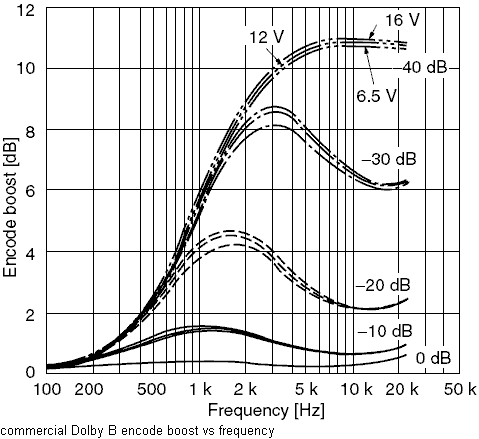
Although it might upset haughty audiophiles, it is a fact that in virtually all situations, the first tool a professional will reach for, after setting initial volumes, will be the equalisation. A mere glance at any mixing desk will confirm this.
It is arguable that, for example, with equalisation signal to noise ratios can deteriorate especially with dirty or worn switches or controls. Some will insist that the 'sonic qualities' of capacitors are objectionable. However, most normal humans indicate agreeableness with the ability to vary a system's frequency response, or the slope of same. Contrary views appear to uphold the belief in perfect systems, speakers, listening rooms and ears that all somehow miraculously combine simultaneously, often by sheer will-power, self-belief, unknown laws of physics or because of the amount of money that has been spent. Dispassionate hardware always contradicts these.
At the same time, signal content that is outside the audio band can cause distortion in the later stages of the system's amplification or even contribute to the destruction of speakers. These can arise from infrasonic tone arm defficiencies or moving-coil cartridges that, because of their low inductance, can easily provide an ultrasonic frequency response. Tuners, tape decks and digital sources can all exhibit unwanted high frequency byproducts or a dangerous DC bias. Improvements will then occur if these are then omitted. One audio bandwidth filter is shown below, but other forms and types abound.
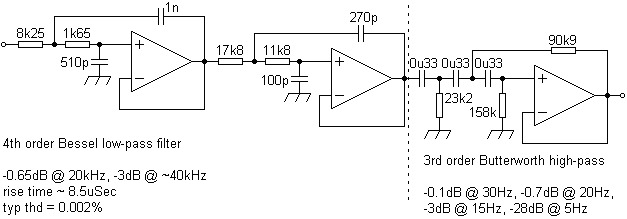
Tolerances of ±5% can give satisfactory results, but to reduce channel mismatches ±1% components are recommended. Best driven by a low impedance source, say 100R, these can precede the power amplifier or tone controls.
Although graphic equalisers are often seen (best placed before an active crossover, or power amplifier), preference was given to parametric controls which, in live performance particularly, proved more useful. Whichever approach is used, a light touch is recommended lest system limitations or architectural resonances predominate. Reducing a system's overall output, even by a relatively small amount, will allow greater flexibility, whilst increasing enjoyment. When recording, even experienced engineers will forget that cutting the low frequencies will have a similar subjective effect to boosting the higher ones. Cutting will give more headroom and less likelihood of clipping. So instead of raising the treble, say, cut the bass and boost the overall gain and see if this sounds better than simply raising the treble. Input peak detectors integral with a system's equalisation can be useful for avoiding distortion.
Even in the most rudimentary audio gear some form of 'tone' control can be found. Here, a simple RC network is placed across the volume control.
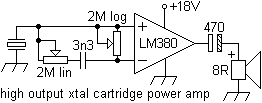
In this case, an acceptable level of 'treble' would be set, giving detail, the bass performance being determined by the speaker's enclosure. It should be noted that the use of high-value (500k+) potentiometers can introduce problems because of the stray capacitances between the wiper and the track's ends. At low volume levels, a few picofarads across the upper arm can boost the treble response by several dB at 12kHz or so, or introduce a 'spikiness' to square waves. These factors might have been considered in this National Semiconductor application.
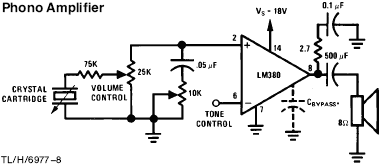
More sophisticated Baxandall tone control configurations are universal. With variants as diverse as language (Ramon Vargas Patron offers an examination of the James-Baxandall Passive Tone-Control Networks here), a typical arrangement is shown below
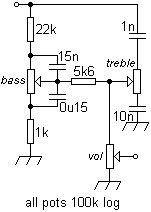
Insertion losses will be near that of the gain available referred to 1kHz and log pots are used which may not match as closely as linear types.
Another version intended for the NE5532/4 opamps which 'recovers' the losses and uses linear pots. To cope with high Qs and frequencies, a good gain bandwidth product (20 x Q^2 x Fc) and low-noise is recommended. Regulated and well-smoothed supplies are a prerequisite, include decoupling for each IC.

Experience has shown that often the depth of cut and lift exceeds requirements . A more subtle control can have less of a spread, say ±6dB, compared to the normal commercial range of ±12dB. This can be switched. Other configurations can be used, eg;
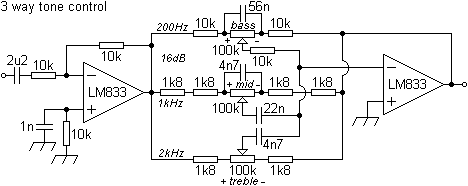
and
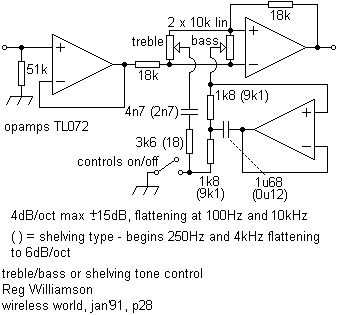
or

